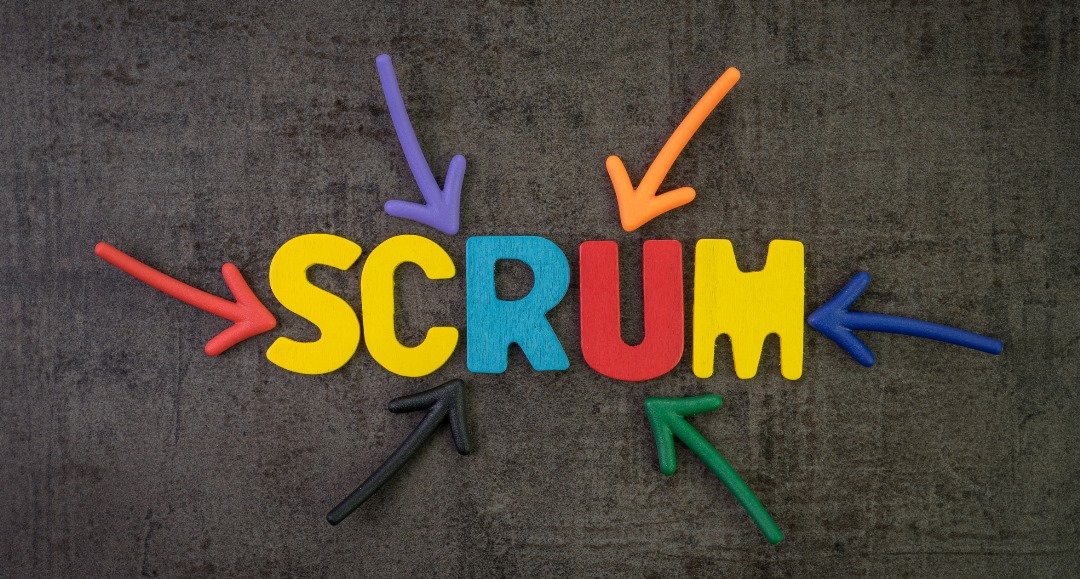Table of Contents
Navigating the world of Agile project management can be daunting for newcomers. The Scrum framework, with its unique terminology and ceremonies, often seems complex and intimidating. Yet, understanding Scrum events is crucial for effective Agile implementation. These time-boxed ceremonies provide structure, foster collaboration, and drive continuous improvement within Scrum teams.In this article, we aim to demystify Scrum events for Agile newcomers. We will provide a clear, step-by-step guide to understanding and effectively participating in these ceremonies.
From Sprint Planning to Sprint Retrospective, we will delve into the purpose, structure, and best practices for each Scrum event. Our goal is to equip you with the knowledge to improve your team’s Agile practices. Whether you are a project manager transitioning to Agile methodologies or a professional seeking to understand Scrum basics, this guide is for you. Let’s embark on this journey to simplify Scrum events and enhance your Agile expertise.
Understanding the Scrum Framework
Scrum is a widely adopted Agile framework for managing complex projects. It is empirical, meaning it is based on observation and experimentation. Scrum promotes transparency, inspection, and adaptation—three pillars that form the foundation of its approach.The Scrum framework is structured around roles, artifacts, and events. Each of these elements plays a crucial role in the successful implementation of Scrum. They work together to create regularity and minimize the need for meetings not defined in Scrum. The key elements of the Scrum framework are:- Scrum Roles: Product Owner, Scrum Master, and Development Team
- Scrum Artifacts: Product Backlog, Sprint Backlog, and Increment
- Scrum Ceremonies or Events: Sprint Planning, Daily Scrum, Sprint Review, and Sprint Retrospective
The Scrum Team and Their Roles
The Scrum Team consists of the Product Owner, the Scrum Master, and the Development Team. Each role has specific responsibilities and contributes to the overall success of the project. The Product Owner is responsible for maximizing the value of the product. They manage the Product Backlog and work closely with the team and stakeholders to ensure that the product meets the users’ needs. The Scrum Master facilitates the Scrum events and coaches the team to adhere to Scrum principles. They help the team to get the most out of Scrum, removing impediments and promoting a productive and collaborative environment. The Development Team is responsible for delivering a potentially releasable Increment of “Done” product at the end of each Sprint. They work together to design, develop, and test the product features selected for the Sprint. To gain a deeper understanding of the Scrum roles their dynamics and their significance in the digital economy, check out our article “Scrum Roles : A Comprehensive Guide”.The Scrum Artifacts
Scrum Artifacts provide key information that the Scrum Team and stakeholders need to understand the product being developed and the progress made. They represent work or value and are designed to maximize transparency of key information. The Product Backlog is an ordered list of everything that is known to be needed in the product. It is the single source of requirements for any changes to be made to the product. The Product Owner is responsible for the Product Backlog, including its content, availability, and ordering. The Sprint Backlog is the set of Product Backlog items selected for the Sprint, plus a plan for delivering the product Increment and realizing the Sprint Goal. It is a forecast by the Development Team about what functionality will be in the next Increment and the work needed to deliver that functionality. The Increment is the sum of all the Product Backlog items completed during a Sprint and the value of the increments of all previous Sprints. It provides a step-by-step visualization of the product as it evolves, with each Increment being a piece of working product.The Four Key Scrum Events
Scrum Events, also known as Scrum ceremonies, are time-boxed activities that structure the work of a Scrum Team. They are designed to create regularity and minimize the need for other meetings. Each Scrum Event has a specific purpose and is essential for the success of the Scrum Team. The primary Scrum Events are Sprint Planning, Daily Scrum, Sprint Review, and Sprint Retrospective. Each event provides a formal opportunity to inspect and adapt something. These events are used in Scrum to create regularity and to minimize the need for meetings not defined in Scrum.Sprint Planning: Laying the Foundation
Sprint Planning initiates the Sprint by setting goals and selecting items from the Product Backlog. It is a collaborative effort involving the Scrum Master, who facilitates the meeting, the Product Owner, who clarifies the details of the Product Backlog items, and the Development Team, who defines the work and effort necessary to meet their Sprint Goal. The outcome of the Sprint Planning should be a Sprint Goal and a Sprint Backlog. The Sprint Goal is an objective set for the Sprint that can be met through the implementation of the Product Backlog. It guides the Development Team on why it is building the Increment. The Sprint Backlog is the set of Product Backlog items selected for the Sprint, plus a plan for delivering the product Increment and realizing the Sprint Goal. It makes visible all the work that the Development Team identifies as necessary to meet the Sprint Goal.Sprint Planning Guide
A successful Sprint Planning requires a clear understanding of the capacity of the Development Team and the priority of the Product Backlog items. The Product Owner should have a well-ordered Product Backlog with the higher priority items well understood and ready for selection in the Sprint Planning. The Development Team should consider their past performance, their upcoming capacity, and the Sprint Goal as they forecast what they will be able to deliver in the upcoming Sprint. They should also consider the risks and dependencies associated with the selected Product Backlog items. The Scrum Master should ensure that the event takes place and that attendants understand its purpose. They also ensure that the meeting is time-boxed and keeps the team focused and engaged.Daily Scrum: Keeping the Momentum
The Daily Scrum is a 15-minute stand-up meeting for the Development Team to synchronize activities and create a plan for the next 24 hours. This meeting is held at the same time and place each day to reduce complexity. The Development Team uses it to inspect progress toward the Sprint Goal and to inspect how progress is trending toward completing the work in the Sprint Backlog. The Daily Scrum is not a status meeting. It is an opportunity for the Development Team to inspect itself and create a plan for the next 24 hours. This optimizes team collaboration and performance by inspecting the work since the last Daily Scrum and forecasting the work that could be done before the next one.Daily Scrum Tips
The Daily Scrum is a critical event for the Development Team. It helps them stay synchronized and make necessary adjustments to their plan to reach the Sprint Goal. To get the most out of this event, the Development Team should focus on what they accomplished since the last Daily Scrum, what they plan to do before the next one, and whether anything is slowing them down or getting in their way. The Scrum Master can help by ensuring that the Daily Scrum takes place, but the Development Team is responsible for conducting the Daily Scrum. The Scrum Master enforces the rule that only Development Team members participate in the Daily Scrum.Sprint Review: Inspecting and Adapting the Product
The Sprint Review is conducted at the end of the Sprint to inspect the Increment and adapt the Product Backlog if needed. During the Sprint Review, the Scrum Team and stakeholders collaborated about what was done in the Sprint. Based on that and any changes to the Product Backlog during the Sprint, they collaborate on what to do next. The Sprint Review is an informal meeting, not a status meeting, and the presentation of the Increment is intended to elicit feedback and foster collaboration. This is a key event for inspecting and adapting the product as it emerges, and hence, it’s crucial to keep it transparent and collaborative.Sprint Review Best Practices
The Sprint Review is a critical event for inspecting and adapting the product. The Product Owner should ensure that the stakeholders are invited and understand the purpose of the Sprint Review. They should also ensure that the most current state of the Product Backlog is understood. The Development Team should demonstrate the work that it has “Done” and answer questions about the Increment. They should also discuss what went well during the Sprint, what problems they ran into, and how those problems were solvedSprint Retrospective: Reflecting and Improving
The Sprint Retrospective is a vital Scrum event that allows the Scrum Team to collectively review the recently completed Sprint. This time-boxed meeting offers a dedicated space for team members to discuss what worked well, what didn’t go as expected, and how to enhance processes in the upcoming Sprint. By encouraging open and honest dialogue, the retrospective promotes a culture of continuous learning and growth within the team. Through reflection and analysis of both accomplishments and obstacles, the team can identify concrete actions to boost teamwork, effectiveness, and overall outcomes in future Sprints.Sprint Retrospective Best Practices
Implementing effective Sprint Retrospective best practices can significantly enhance the value derived from this essential Scrum event. To ensure a productive retrospective, it is imperative to create a safe and open environment where team members feel comfortable sharing their perspectives. Setting a positive tone and fostering collaboration can encourage meaningful discussions and constructive feedback. Additionally, focusing on specific and actionable improvement points rather than dwelling on blame can drive tangible outcomes and foster a culture of continuous learning and development. Embracing transparency, active participation, and commitment to implementing agreed-upon improvements are key elements in maximizing the benefits of the Sprint Retrospective and elevating team performance and synergy.Maximizing the Value of Scrum Events
Scrum Events are not just meetings, but opportunities for the team to align and improve their process. They are designed to support the creation of high-quality products that meet customer needs. Understanding and effectively implementing Scrum Events can lead to increased team morale and better stakeholder satisfaction. The frequency and effectiveness of Scrum Events can directly impact the velocity and productivity of the team. Therefore, it’s crucial to respect the time-box for each event and ensure full engagement and honesty of the Scrum Team members.The Roles of the Scrum Master in Scrum Events
- The Scrum Master plays a crucial role in coaching the team to get the most out of Scrum Events. They facilitate the events to ensure that they are productive and adhere to Scrum principles. The Scrum Master also helps the team understand the purpose of each event and how it contributes to the overall success of the project.
- The Scrum Master ensures that the events take place and that the team understands their purpose. They also help the team keep the events within the time-box. The Scrum Master’s role is not to lead the events, but to ensure that the team has what it needs to conduct them effectively.
- The Scrum Master also plays a key role in promoting transparency, inspection, and adaptation—the three pillars of Scrum. They help the team use the events as a mechanism to plan work, review progress, and make necessary adjustments in real-time.



